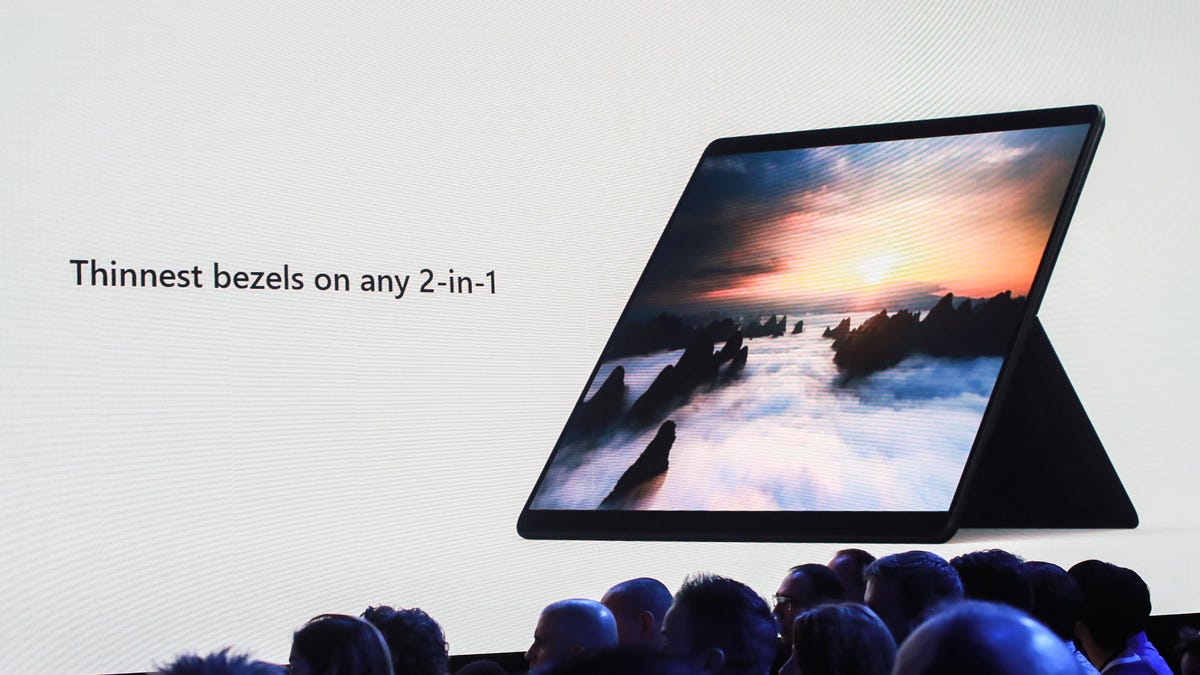Microsoft tries Windows on Arm chips again with SQ1-powered Surface Pro X
The chips are designed to consume less power than those from Intel, Microsoft's traditional partner.

Microsoft Surface Pro X
With its newest Surface devices unveiled at its Surface event in New York Wednesday, Microsoft has returned to the Arm chip family for power-sipping laptops. And it's not just any Arm chip, but Microsoft's own SQ1 design that the company engineered in partnership with Qualcomm.
The event also saw the launch of the Surface Neo dual-screen tablet and Surface Duo dual-screen Android phone, and Windows 10 X software for dual-screen devices. More conventional new products included the Surface Laptop 3, Surface Pro X and Surface Pro 7 tablets, and the kooky Surface Earbuds.
Microsoft surged to financial success more than two decades ago with the power of the "Wintel duopoly," the combination of its Windows software and Intel's processors. But Microsoft is now trying to bring Windows to the Arm family of chips, which are already built by companies like Qualcomm, Apple and Samsung and used in every smartphone.
"We wanted to push the boundaries, to create a product that's the perfect intersection of mobility, productivity and speed," said Panos Panay, chief product officer at Microsoft. "The dream was to take a mobile architecture, the same architecture you find in your phone, but then push that to a fully functioning, powerful PC."
An Arm-powered Surface laptop isn't unprecedented. Not only do PC makers like HP, Samsung, Lenovo and Asus offer Qualcomm-powered PCs, but Microsoft itself tried. When it introduced its first-generation Surface laptops, the Surface RT used an Nvidia-designed Arm CPU.
Arm chips haven't been able to keep up with Intel when it comes to peak performance. But when it comes to balancing speed with battery life, Microsoft thinks the SQ1 is a big deal.
"This product has 3x more performance per watt than the Surface Pro 6," Panay said. That super-thin laptop uses an Intel eighth-generation Core processor.
Microsoft touts its SQ1 processor at a Surface event.
Intel is working on its own answer: the Ice Lake chip family that's geared for premium laptops arriving now.
The SQ1 also offers dedicated circuitry for accelerating AI software, a major advance in computing technology when it comes to chores like recognizing speech and editing photos.
There's one big caveat with Arm-based Windows laptops, though: software compatibility. Microsoft has moved Windows to Arm and is working hard to coax software developers to move their own apps, too. A Surface laptop from Microsoft could help persuade developers that it's time.
First published Oct. 2 at 7:53 a.m. PT
Update, 8:02 a.m. PT and 8:35 a.m. PT: Ddds further details.

